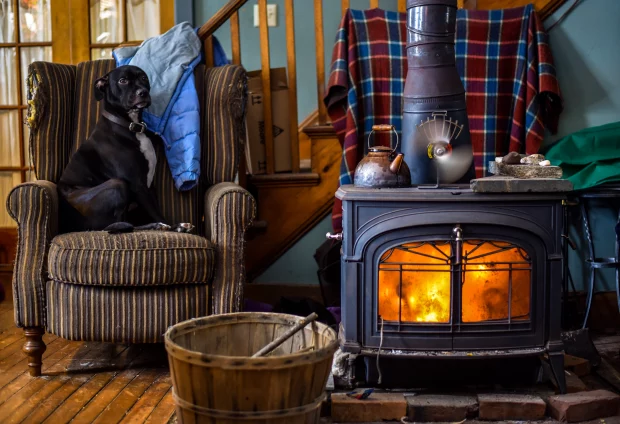Why You Should Consider a Wood Stove for Your House
If you’re looking for a stylish upgrade for your living room, a peripheral heating source to keep your house warmer in winter, or just a new installation to liven up your home, one of the best choices you can make is installing a wood stove. But what makes wood stoves so great and how can you choose the right one for your needs?


Top Reasons to Get a Wood Stove
These are some of the best reasons to get a wood stove:
- Heat. Wood stoves generate heat. In fact, this is probably the most popular reason why people get wood stoves in the first place. Functioning almost like a fireplace, you’ll be burning wood regularly and emitting radiant heat throughout your house. This is especially powerful for the room in which the wood stove is installed. If you find your house doesn’t stay warm enough in winter, or if there’s one room in your house that’s always cold, this could be exactly what you need.
- Cost-effectiveness. Relatively speaking, wood stoves are also cost-effective. Many homeowners initially dislike or are indecisive about the idea of installing a wood stove because they’re concerned about how much it costs to keep running. But in terms of heat generation, it’s much more efficient than you might think.
- Style. Some people choose to install wood stoves because they love the stylistic touch it brings. It can function as a centerpiece for your living room, or bring a cozy touch to your basement. No matter where it’s installed, it’s going to draw the attention of your family members and guests, ultimately bringing new life into your home. If you like the look and aesthetics of wood stoves, that’s reason enough to get one.
- Cooking options. Wood stoves aren’t just a way of generating heat. As long as you have a cooking insert, they can also be used as a way to cook food. If you love the char of natural flames, you can experience it anytime you want, regardless of the season. And if your conventional oven or stove is not functioning, you’ll have a backup way to prepare the food you need.
- Environmental friendliness. Unlike natural gas and propane, wood is carbon neutral (though there’s still a bit of a debate on this, since carbon neutrality is a complex topic). For the most part, wood stoves are generally considered environmentally friendly.
Things to Keep in Mind
Before getting a wood stove, there are a few things you’re going to need to keep in mind.
- Available space. For starters, wood stoves don’t take up much space, but you’re still going to need to find a space for your wood stove. You’re also going to need to think about ventilation; is there a place to install your wood stove where it can be ventilated properly?
- EPA regulations. The EPA has some strict regulations about pollution, so you’ll need to make sure that the wood stove you buy is in full compliance with those regulations. Most modern wood stoves follow EPA guidelines rigorously, but it still pays to do your research and buy from a reliable vendor.
- Local laws and regulations. The EPA isn’t the only organization that dictates rules for installing and using wood stoves. You’re also going to need to understand local laws and regulations. Certain municipalities and neighborhood organizations specifically forbid certain types of fireplaces and wood stoves, attempting to reduce pollution or remove fire hazards. If you’re not sure about the local laws in your area, contact the Department of Environmental Quality in your city for more information. It’s also important to contact your homeowner’s association (HOA) to make sure you’re complying with neighborhood requirements.
Important Choices to Make
If you’re ready to purchase a wood stove, these are some of the most important choices you’ll need to make:
- Venting. Where is this wood stove going to be ventilated? How is it going to be ventilated? Is this ventilation going to be in full compliance with both EPA and local regulations?
- Location. Where is your wood stove going to go? Most people place their wood stove in the room that requires the most peripheral heat, or in a location where they plan to do a lot of cooking.
- Heat output. How much heat output do you want from this wood stove? Is it going to heat a small room or provide heat to your entire home?
- Efficiency. Wood stoves are rated based on their energy efficiency. Look for an energy efficiency of at least 80 percent.
- Style. There are many shapes, sizes, and styles to consider, so choose something that fits your aesthetic preferences.
Whether you’re interested in the peripheral heat, the cooking opportunities, or just a stylish upgrade to your home, a wood stove could be perfect for you. It takes a bit of research to figure out exactly what you want, but once you make your decision, all you’ll need is an installer and you’ll be ready to go.